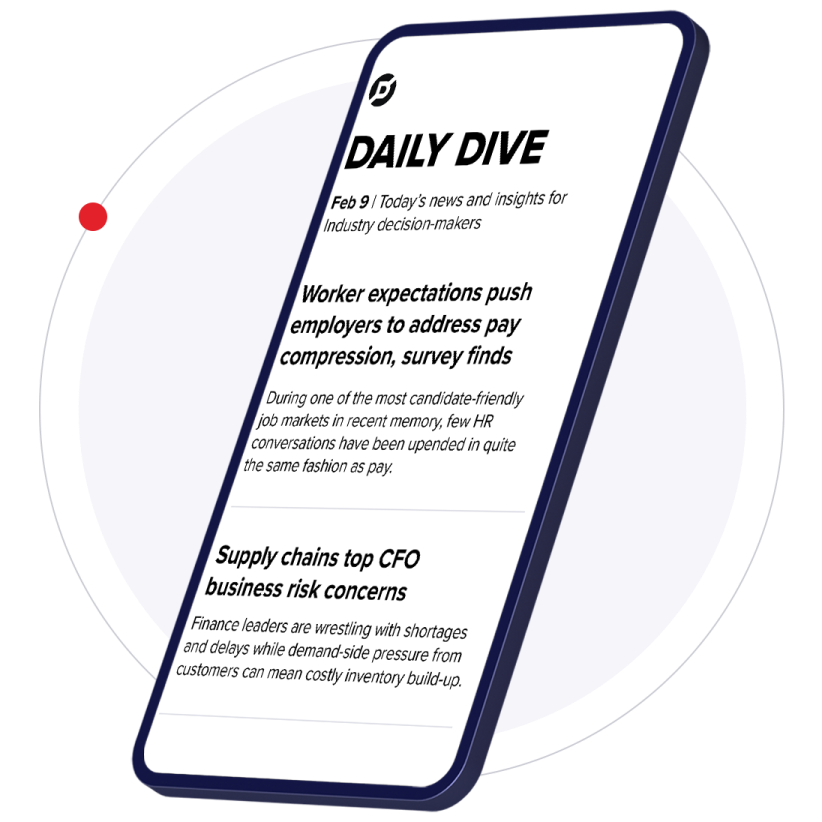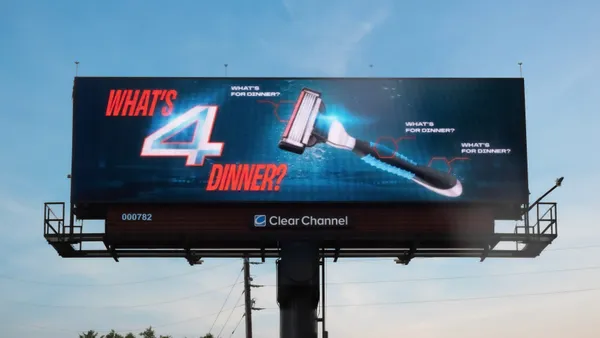As e-commerce soars due to the coronavirus pandemic's effects on daily life, a company's supply chain is more essential than ever. For Ryder, supply chain management accounts for about $4 billion of its $9 billion in annual business, even though the company is best known for leasing and rental trucks.
Executive Vice President and CMO Karen Jones saw an opportunity for a marketing campaign — the company's first about its supply chain business, and its largest in size and scope since 2014. Entitled "Ever Better World of Logistics," the campaign runs across TV, display, paid search, print and other digital content, covers a range of Ryder's lesser-known services and targets supply chain decision-makers. And it's worked so far. After a month in the market, it already led to a 21% lift in leads.
Jones spoke with Marketing Dive about launching a campaign during the pandemic, why it made sense to create it in house and how the CMO role continues to evolve.
The following interview has been edited for clarity and brevity.
MARKETING DIVE: What was the process behind the conception and execution of this campaign.
KAREN JONES: We have a customer advisory board. We meet twice a year and it helps us evolve our thinking around new products, offerings and services. Customers told us time and time again, "Nobody knows this about you guys, nobody knows that you do supply chain and logistics — we had no idea we had these options." We heard that for several years and finally it was time to do something about it.
We have a very aggressive growth goal for that side of the business, which seems to be very hot right now. Before the pandemic, fewer people understood what supply chains are. Since the pandemic, it's a household word.
We had plans to raise the profile and awareness of that side of the business, and then came the pandemic. All of our production and timelines got moved, we had to do it very rapidly and get special permissions for shooting while our crews were social distancing. It made everything a bit more challenging. With our inside creative services team, we pulled the campaign together and quickly executed it.
The digital campaign launched on July 27 and the TV campaign launched on Aug. 1. We've already seen a huge lift in lead volume: a 21% increase in leads generated in the first month of the campaign.
We would have done it regardless of the pandemic because we had this need to educate the market on what we do, but having the pandemic and supply chain becoming a household word, it made the campaign 10 times more relevant. I hate to say COVID was a benefit, but the environment it created benefited us in this way.
What was behind the decision to develop this campaign in-house?
JONES: We've worked with agency partners and still do, but we have built an internal capability. Because we were already slowed due to the pandemic and we needed to hurry and get to market, we knew what we wanted to communicate better than an agency, and we eliminated the back-and-forth that comes with getting a bunch people who don't understand your business as intimately as your own employees do.
It behooved us to leverage our internal resources for this. It's not a slight against agencies, but it takes a little more time to get them to understand your business sometimes, and these circumstances required a different approach.
Did you have concerns about tailoring your marketing message to the pandemic?
JONES: For us it was a little different because we offer essential services. The world didn't stop if you needed groceries and essential products, and since we service that, it wasn't a real conflict for us because the campaign communicates how we serve essential businesses that keep the country running.
I don't think it was difficult to message during the pandemic because the brand makes sense, but I have seen other brands that have glommed on without a real purpose or mission of what the product is.
What lessons have you learned about how the CMO position continues to evolve, and how does that impact this campaign?
JONES: The CMO role has evolved over the years, and I think those that have staying power are integrated into the business. They understand the financial objectives of the company, the strategic objectives and they help drive that. I don't think CMOs last long if they're over on an island, dreaming up creative campaigns, having fun and doing sponsorships without a business objective and purpose that ties to ROI.
These days, dollars are precious for every company, but there is a level of accountability that CMOs have. You used to be able to say, "Trust me, we have an awareness issue, give me some money and I'll a create big brand campaign and people will know who we are." Now, people will want accountability: "What happened with the money that we gave you, and how many people are more aware of us and what did that awareness translate into?" That's where I think digital comes in as such a strong medium for us to see who saw our campaign and who's been part of our targeting and messaging strategy.
CMOs in general who can't measure and can't show ROI don't usually last long. [In this case] having lead volume rise 21% in one month signals a really compelling case for the campaign spend.
The effort will run through the end of the year. We're all planning for next year, and I think it's really good timing to have that positive response. If it yields good results, it bodes well for the campaign's continuation into 2021 and beyond.























